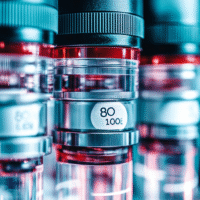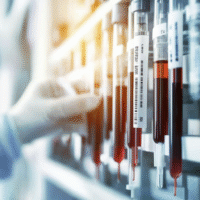Understanding the German SAQOL-39g for Stroke Patients
The German Stroke and Aphasia Quality of Life Scale — 39/generic (SAQOL-39g) is a tool designed to help measure how stroke affects a person’s quality of life, especially for those with aphasia, a condition that affects communication. This tool has been adapted from the original English version to better fit German-speaking patients.
What Did the Study Find?
The study involved 156 people with chronic post-stroke aphasia and looked at how well the German SAQOL-39g works. Here are the key findings:
- Easy to Use: The scale was easy for all patients to complete, regardless of how severe their aphasia was.
- Reliable Results: The scale showed strong internal consistency, meaning it gives consistent results (Cronbach’s α=0.90).
- Good Test-Retest Reliability: The results were stable over time, which is important for tracking changes (ICC=0.73 to 0.85).
- Measures Key Areas: It effectively measures three important areas: physical health, communication, and psychosocial well-being.
- Responsive to Change: The scale can detect changes in quality of life after treatment, showing a small-to-medium effect (Cohen’s d=0.34).
How Does This Help Patients and Clinics?
The German SAQOL-39g is a valuable tool for both patients and healthcare providers:
- For Patients: It helps them express how stroke has impacted their lives, which can guide their treatment and recovery goals.
- For Clinics: It provides a standardized way to measure patient outcomes, helping to improve rehabilitation strategies.
Real-World Opportunities
Hospitals and doctors can use these findings in several ways:
- Implement the German SAQOL-39g in rehabilitation programs to assess patient progress.
- Use the results to tailor therapy plans based on individual patient needs.
- Encourage patient involvement in their care by discussing their quality of life scores.
Measurable Outcomes to Track
Clinics should monitor the following after using the German SAQOL-39g:
- Changes in quality of life scores before and after treatment.
- Patient satisfaction with communication and rehabilitation services.
- Improvements in specific areas like physical health and social interaction.
AI Tools to Consider
There are AI solutions that can assist in analyzing patient data and tracking outcomes:
- AI-driven analytics tools can help identify trends in patient responses over time.
- Chatbots can provide patients with reminders and support for completing the SAQOL-39g.
Step-by-Step Plan for Clinics
Here’s how clinics can start using the German SAQOL-39g:
- Start Small: Introduce the SAQOL-39g in one department or with a small group of patients.
- Train Staff: Ensure that healthcare providers understand how to administer and interpret the scale.
- Collect Data: Begin tracking patient responses and outcomes using the scale.
- Evaluate Results: Regularly review the data to see how it impacts patient care and outcomes.
- Expand Use: Gradually implement the scale across more departments based on initial success.
For more detailed information about this research, you can visit the study link: Eur J Phys Rehabil Med.


























